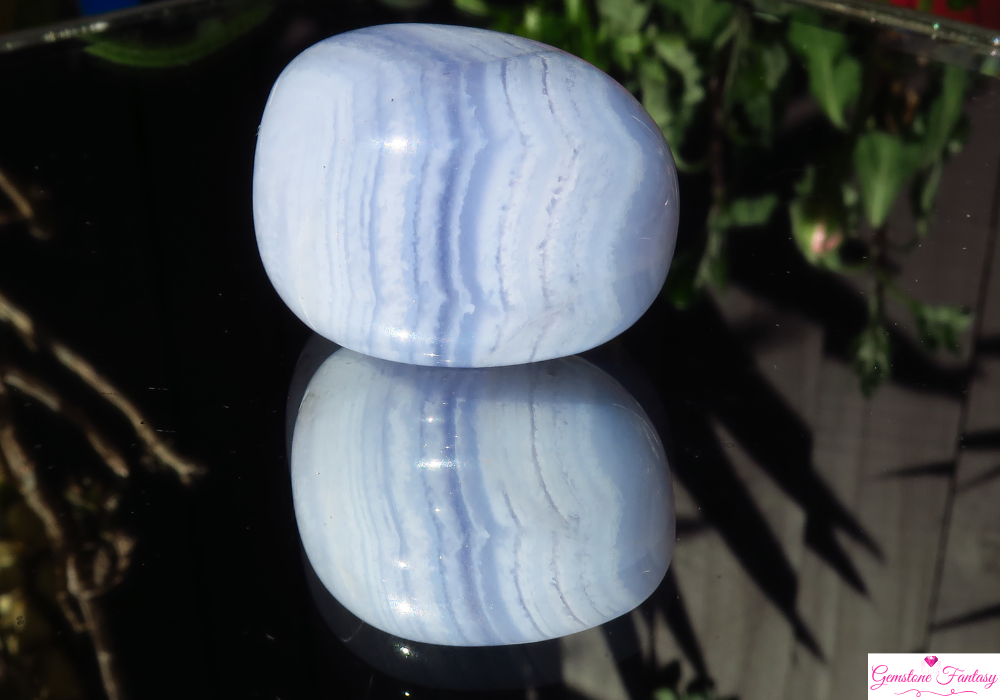Feldspar is the most common mineral group found on Earth, making up approximately 60% of the Earth’s crust. It is a vital component in many types of rocks, including igneous, metamorphic, and sedimentary formations. Within the feldspar group, several gemstones are highly valued for their beauty and unique optical effects, such as iridescence and adularescence.
This article provides an in-depth look at the feldspar family, the different gemstones it produces, and their unique characteristics.
1. Moonstone
- Color: White, blue, peach, and gray, with a signature blue sheen.
- Properties: Moonstone is the most famous gem in the feldspar group, celebrated for its mystical “adularescence,” a soft, billowy glow that moves across the stone’s surface. This phenomenon is caused by light scattering between the thin layers of feldspar minerals within the stone.
- Uses: Moonstone has been cherished for centuries and is often used in jewelry like rings, pendants, and earrings. It is believed to be a stone of new beginnings, intuition, and emotional healing.
- Notable Varieties: Rainbow moonstone is another popular variety, displaying a range of iridescent colors.
2. Labradorite
- Color: Primarily gray with flashes of blue, green, yellow, orange, and sometimes violet.
- Properties: Labradorite is known for its striking play of colors, known as “labradorescence.” This effect occurs when light enters the stone, bounces off twinning surfaces within the crystal, and reflects as vibrant flashes of color.
- Uses: Labradorite is highly sought after in jewelry for its mesmerizing appearance. It is also used in carvings and ornamental pieces. Many people believe that labradorite enhances intuition and protects against negativity.
- Origin: It was first discovered in Labrador, Canada, and can also be found in other parts of the world like Madagascar and Finland.
3. Sunstone
- Color: Ranges from pale yellow to reddish-orange, brown, and even greenish.
- Properties: Sunstone is a unique feldspar variety known for its “aventurescence,” a sparkling effect caused by tiny platelets of copper or hematite within the stone. The warm, golden glimmer of sunstone makes it a popular choice for jewelry.
- Uses: Sunstone is commonly used in rings, necklaces, and other forms of jewelry. It is often associated with warmth, abundance, and personal empowerment.
- Locations: Sunstone is found in places like the United States, India, and Norway.
4. Amazonite
- Color: Bright green to blue-green, often with white streaks or mottling.
- Properties: Amazonite is a striking variety of feldspar with a vivid blue-green color. The stone gets its color from trace amounts of lead and has a soft, pearly luster.
- Uses: Amazonite is popular in beads, pendants, and cabochons due to its vibrant color. It is believed to have calming properties and is associated with truth, communication, and harmony.
- Myth: The stone was named after the Amazon River, although no deposits of amazonite have been found there. Ancient civilizations, such as the Egyptians, valued the stone for its beauty and spiritual significance.
5. Orthoclase
- Color: Typically white, pink, or beige.
- Properties: Orthoclase is a potassium-rich feldspar and is best known for its clear, transparent form, which is sometimes used as a gemstone. One of its most famous varieties is the mineral used to classify gemstones on the Mohs scale of hardness.
- Uses: Transparent forms of orthoclase are occasionally used in jewelry. It is also valued for industrial purposes in ceramics and glass production.
- Other Applications: Orthoclase is significant in geological studies and is a key component in rocks like granite.
6. Microcline
- Color: Often green, but also found in pink, white, or blue shades.
- Properties: Microcline is a variety of feldspar that forms under lower temperature conditions compared to other feldspars. One of the most famous types of microcline is Amazonite, which, as mentioned earlier, is renowned for its vibrant blue-green color.
- Uses: Microcline in its gemstone form, such as amazonite, is used in beads, cabochons, and carvings. It is believed to enhance communication and align with the heart chakra.
7. Albite
- Color: Usually white or light-colored, but can show pale shades of blue, green, or yellow.
- Properties: Albite is a sodium-rich feldspar. While it is not typically used as a gemstone, its transparent and beautifully structured crystals are sometimes cut for collectors or used in jewelry.
- Uses: Albite is mostly used in the manufacturing of ceramics and glass. Some high-quality transparent albite crystals are also cut as gemstones.
- Metaphysical Beliefs: Albite is said to assist in clarity of thought and help in problem-solving.
Formation of Feldspar Gemstones
Feldspar forms as a result of cooling magma, and it is present in many types of igneous rocks like granite. As the magma cools, the feldspar crystals develop and can later undergo transformations due to pressure, temperature, or chemical changes. These changes lead to the formation of various types of feldspar gemstones, each with unique characteristics.
Feldspar’s crystal structure allows it to display optical phenomena like adularescence (seen in moonstone) and labradorescence (seen in labradorite), making these gems highly prized for jewelry.
Industrial Importance of Feldspar
Beyond its use in gemstones, feldspar has significant industrial applications. It is a key ingredient in the manufacturing of glass, ceramics, and porcelain. Feldspar acts as a flux, which helps to lower the melting point of the materials it is mixed with, making it essential in glassmaking and the production of pottery.
Metaphysical Properties of Feldspar
Many feldspar gemstones are associated with metaphysical healing and spiritual properties. Some common beliefs include:
- Emotional Healing: Moonstone and amazonite are thought to bring calm, peace, and emotional balance. Moonstone is often linked to feminine energy and intuition, while amazonite is said to promote clear communication.
- Grounding and Protection: Labradorite is frequently used as a protective stone, guarding against negative energy and psychic attacks.
- Empowerment and Confidence: Sunstone is often associated with the sun’s energy, promoting optimism, enthusiasm, and self-confidence.
Conclusion
The feldspar group is one of the most diverse and fascinating families of minerals, offering a wide range of stunning gemstones with unique optical properties and colors. Whether it’s the shimmering blue hues of moonstone, the fiery sparkle of sunstone, or the ethereal flashes of labradorite, feldspar gemstones are beloved for their beauty and metaphysical significance.
Feldspar gemstones not only adorn beautiful pieces of jewelry but also hold deep spiritual meanings for those who believe in their metaphysical properties. Their abundance, durability, and dazzling array of colors and effects ensure that feldspar remains one of the most popular and versatile groups of gemstones.

















